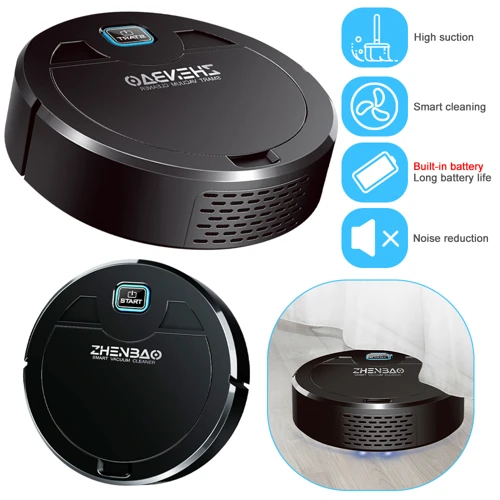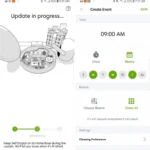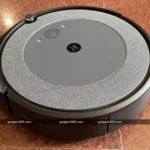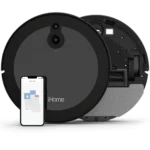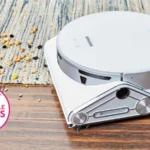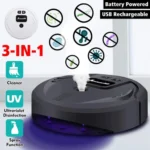Have you ever been annoyed by the loud noise your vacuum cleaner makes? Have you ever wished for a quieter and more efficient cleaning experience? Look no further, because the solution lies in the integration of smart sensors in vacuum cleaners. With the advancement of technology, vacuum cleaners are no longer just noisy machines that suck up dirt and dust. They have evolved into intelligent devices that are equipped with sensors that can detect and adapt to various cleaning situations. In this article, we will explore how smart sensors contribute to noise reduction in vacuum cleaners, the types of sensors used, and the benefits and challenges of their implementation. Join us on this journey to learn about the future of cleaning technology.
The Role of Smart Sensors in Noise Reduction
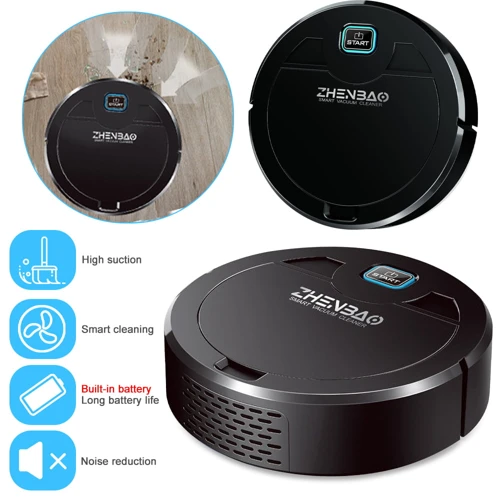
When it comes to cleaning our homes or offices, one of the biggest challenges is dealing with the noise generated by vacuum cleaners. However, with the advent of smart sensors, the game has changed. These advanced sensors have a crucial role to play in reducing the noise generated by vacuum cleaners. By detecting dust and dirt, adjusting suction power, identifying obstacles, and more, smart sensors offer numerous benefits that have enhanced the efficiency and durability of vacuum cleaners. In this article, we’ll take a closer look at the role of smart sensors in noise reduction and how they contribute to the quieter cleaning experience. To learn more about the types of smart sensors used in vacuum cleaners, check out our article on smart vacuum sensors.
1. Detecting Dust and Dirt
One of the key roles that smart sensors play in reducing noise in vacuum cleaners is in detecting dust and dirt. By accurately sensing the amount and location of particles on the floor, vacuum cleaners can adjust their suction power to efficiently pick up the debris without generating excess noise. This not only leads to a quieter cleaning experience but also ensures that no dust or dirt is left behind.
To achieve this, vacuum cleaners often incorporate a variety of smart sensors such as infrared and laser sensors, ultrasonic sensors, and camera sensors. These sensors work together to detect the presence of dirt and dust and provide information about their location and quantity.
Incorporating smart sensors for detecting dust and dirt also allows vacuum cleaners to operate more efficiently. By adjusting the suction power to match the amount and type of debris on the floor, the vacuum cleaner can optimize its cleaning performance while reducing noise and minimizing energy consumption.
Implementing smart sensors in vacuum cleaners can result in a more thorough clean, as the sensors can detect even smaller particles that may not be visible to the naked eye. This is especially important for carpet cleaning, where deep cleaning and thorough removal of dust and dirt is essential.
Incorporating smart sensors for detecting dust and dirt is an essential step in reducing noise pollution while enhancing the efficiency and cleaning performance of vacuum cleaners. This is just one way in which smart vacuum sensors are transforming the cleaning industry and contributing to a better, quieter cleaning experience.
2. Adjusting Suction Power
One of the key ways that smart sensors contribute to noise reduction in vacuum cleaners is by adjusting suction power. Traditional vacuum cleaners often have a single suction power level that is fixed regardless of the surface being cleaned. However, this can lead to unnecessary noise and energy consumption when cleaning surfaces that require less suction power.
Smart sensors, on the other hand, can detect the type of surface being cleaned and adjust the suction power accordingly. For example, when vacuuming a hard floor surface, the suction power can be reduced to minimize noise and energy usage, while still effectively removing debris. Conversely, when vacuuming a carpeted surface, higher suction power may be necessary to effectively clean the fibers.
In addition, smart sensors can also adjust suction power based on the amount of debris detected. For instance, if the vacuum cleaner detects a large accumulation of dust, dirt or debris, it can increase the suction power to ensure efficient cleaning. Conversely, if the vacuum cleaner detects a smaller amount of debris, it can reduce suction power to save energy and reduce noise.
By adjusting suction power based on the surface type and amount of debris detected, smart sensors can significantly reduce noise pollution in residential and commercial settings. This can lead to a more pleasant and stress-free cleaning experience, while also enhancing the lifespan and efficiency of the vacuum cleaner.
For more information on the different types of smart sensors used in vacuum cleaners, including their role in obstacle detection and indoor mapping, check out our article on smart vacuum sensors.
3. Identifying Obstacles
One of the most common problems when vacuuming is running into obstacles such as furniture, walls, or other objects. This can not only be frustrating but can also lead to damaging the vacuum cleaner or the objects themselves. However, with the help of smart sensors, this problem can be significantly reduced.
Smart sensors in vacuum cleaners are designed to identify obstacles and either avoid them altogether or adjust their cleaning path to go around them. These sensors use a variety of technologies such as infrared, laser, or ultrasonic to detect objects in their path. The sensors analyze the distance and shape of the object and either stop the vacuum cleaner or adjust the cleaning path accordingly.
Some vacuum cleaners come equipped with indoor mapping capabilities. This essentially means that the smart sensors create a virtual map of the room and the objects in it. This allows for more efficient cleaning as the vacuum cleaner knows exactly where it has already cleaned and where it needs to go next.
Here is a table that summarizes the benefits of smart sensors for obstacle detection:
| Benefits of Smart Sensors for Obstacle Detection in Vacuum Cleaners |
|---|
| Reduces the risk of damage to the vacuum cleaner or objects in the room |
| Adjusts cleaning path to avoid objects |
| Creates a virtual map of the room for more efficient cleaning |
| Improves overall cleaning performance and reduces the need for manual intervention |
It’s clear that smart sensors for obstacle detection play a crucial role in reducing noise pollution caused by collisions and improving the overall efficiency and convenience of vacuum cleaners. As this technology continues to evolve, we can expect even more advanced features that will further enhance the cleaning experience.
How Smart Sensors Contribute to Quieter Cleaning Experience
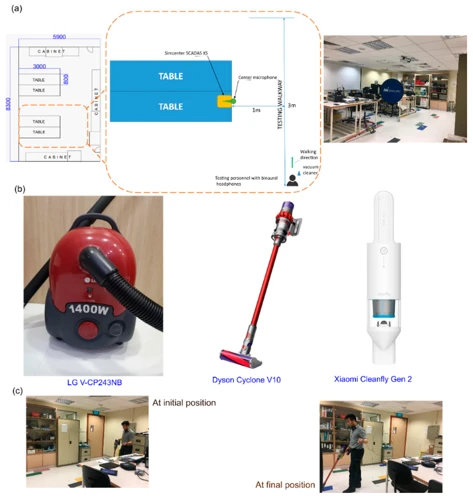
As the demand for quieter and more efficient vacuum cleaners continues to rise, manufacturers have turned to incorporating smart sensors into their designs. These sensors play a crucial role in reducing noise levels during cleaning operations while enhancing performance and optimizing energy consumption. By using smart sensors, vacuum cleaners adjust suction modes, motor speeds, and map out the cleaning environment, providing a disinclined and seamless cleaning experience. In the following sections, we will discuss the ways smart sensors contribute to a quieter cleaning experience and how manufacturers use them to revolutionize cleaning. Keep reading to learn about how smart sensors can adjust motor speed, detect obstacles, and provide variable suction modes in vacuum cleaners.
4. Lowering RPM of Brushless Motors
One of the ways smart sensors contribute to noise reduction in vacuum cleaners is by lowering the RPM of brushless motors. The speed at which the motor blades rotate affects the intensity of the noise generated. By reducing the RPM, the vacuum cleaner can operate at a lower noise level without compromising its cleaning power.
This technique is particularly effective in smart vacuum cleaners that use sensors to detect the dirt and dust level of a given area. Because they have a better understanding of the amount of dirt present in a room, they can adjust the RPM of the motor accordingly.
Lower RPMs can also prolong the lifespan of the vacuum cleaner by reducing the amount of wear and tear on moving parts. This, in turn, can lower the frequency of maintenance needed and reduce the overall cost of ownership.
However, lowering RPMs is not a straightforward process, and it requires sophisticated control mechanisms to ensure that the vacuum cleaner maintains optimal cleaning power. Manufacturers need to strike a delicate balance between reducing noise and maintaining suction power while avoiding damaging the motor. This can be done through precise calibration of the motor and by using advanced control algorithms.
Furthermore, lowering RPMs can impact the battery life of cordless vacuum cleaners. Manufacturers need to ensure that the vacuum cleaner can operate efficiently with lower RPMs to avoid draining the battery too quickly. This is particularly important for smart vacuum cleaners that use multiple sensors, which tend to be more power-hungry.
The smart use of sensors to improve the performance of vacuum cleaners is essential for reducing noise levels in residential and commercial settings. One of the ways this is achieved is by lowering the RPM of brushless motors, minimizing noise pollution, enhancing the durability of vacuum cleaners, and improving the overall cleaning experience. To learn more about the role of smart sensors in vacuum cleaners, check out our articles on smart sensors and obstacle detection or smart sensors and indoor mapping.
5. Controlling and Continuously Monitoring Speed and Performance
Smart sensors also play a crucial role in controlling and continuously monitoring the speed and performance of vacuum cleaners. This is achieved through the use of advanced algorithms that analyze the data collected by the sensors and adjust the cleaning parameters accordingly.
One way that sensors control the performance of vacuum cleaners is through the use of a variable speed motor. Traditionally, vacuum cleaners have had only one speed setting which can lead to inefficient use of energy and increased noise pollution. However, with the addition of smart sensors, vacuum cleaners can now adjust their motor speed to match the cleaning task at hand. For example, when vacuuming on hard floors, the motor speed can be decreased to reduce noise levels, while when cleaning carpets, the speed can be increased to improve suction power.
But controlling the motor speed is just one way that smart sensors contribute to the performance of vacuum cleaners. Sensors can also monitor the performance of the motor and alert the user if there are any issues. For example, if the motor is starting to overheat or if there is a clog in the vacuum’s airflow, the sensor can detect these issues and reduce the motor’s speed or alert the user to take action.
To better understand how sensors work in controlling and monitoring speed and performance, we’ve created a table summarizing their functions:
| Function | Description |
|---|---|
| Variable speed control | Adjusts motor speed to match cleaning task |
| Performance monitoring | Detects issues such as overheating or clogs in the airflow |
| Alert system | Notifies user if an issue is detected and recommends a solution |
By monitoring the speed and performance of the vacuum cleaner, smart sensors contribute to a quieter and more efficient cleaning experience. They help users save energy, reduce noise pollution, and prolong the life of the vacuum cleaner. The use of smart sensors has revolutionized the way we think about vacuum cleaners and has made them an essential tool for healthier and happier homes.
6. Providing Variable Suction Modes
Smart sensors play a vital role in providing variable suction modes for vacuum cleaners. This feature enables the vacuum cleaner to adjust the suction power according to the cleaning surface, thus achieving optimal results. Let’s take a look at how this mode works and its benefits.
1. Automatic Surface Detection: With the help of smart sensors, a vacuum cleaner can quickly identify the type of surface it is cleaning. Whether it’s carpet, hardwood or tiles, the sensor adjusts the suction power to ensure efficient cleaning.
2. Customizable Power Settings: Variable suction modes also offer customized suction power settings for increased control over the cleaning process. Users can select the optimal suction power for specific cleaning tasks, such as picking up larger debris or cleaning delicate surfaces.
3. Energy Efficiency: Variable suction modes also contribute to energy efficiency by reducing power consumption when cleaning surfaces that require less suction power. This feature not only saves energy but also extends the vacuum cleaner’s battery life.
4. Quieter Operation: The use of variable suction modes can contribute to a quieter operation. As the suction power is adjusted automatically based on the surface, the vacuum cleaner doesn’t have to work as hard, resulting in less noise.
5. Improved Cleaning Performance: Providing variable suction modes improves the cleaning performance of the vacuum cleaner as it optimizes suction power for each surface type. This feature makes it easier to pick up dirt and debris that might have been challenging to clean otherwise.
Providing variable suction modes through smart sensors is critical in achieving optimal cleaning performance while promoting energy efficiency and reducing noise levels. This feature provides many benefits for modern-day vacuum cleaners, making them an essential addition to any cleaning arsenal.
Types of Smart Sensors Used in Vacuum Cleaners
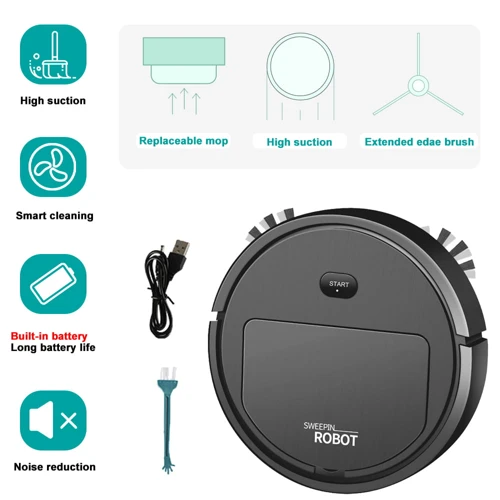
As vacuum cleaner technology continues to advance, smart sensors have become an integral part of the cleaning process. These sensors play a crucial role in detecting and identifying different types of obstacles, dirt, and dust, as well as adjusting suction power and controlling brushless motors. In this section, we will highlight the different types of smart sensors used in modern vacuum cleaners. These sensors range from infrared and laser sensors to ultrasonic sensors and even camera sensors. By understanding the capabilities and limitations of each sensor type, we can gain a deep insight into how these devices help to reduce noise pollution while enhancing the efficiency and performance of vacuum cleaners.
7. Infrared and Laser Sensors
Infrared and Laser Sensors: One of the most common types of sensors used in vacuum cleaners are infrared and laser sensors. These sensors work by emitting beams of light and then measuring the reflection of those beams. This allows the vacuum cleaner to detect the presence of obstacles in its path and navigate around them.
These sensors are typically located on the front of the vacuum cleaner and can detect obstacles such as furniture, walls, and other large objects. The range of these sensors varies depending on the specific model of the vacuum cleaner, but they can typically detect obstacles from a few centimeters to several meters away.
Infrared and laser sensors are also used to help the vacuum cleaner detect the amount of dust and dirt on the floor. These sensors can measure the amount of light reflected back from the floor and determine if there is a significant amount of debris that needs to be cleaned up.
To better understand the use of infrared and laser sensors in vacuum cleaners, let’s take a look at a comparison table:
| Infrared Sensors | Laser Sensors |
|---|---|
| Use infrared beams to detect obstacles and dust on the floor | Use laser beams to detect obstacles and dust on the floor |
| Have a shorter range compared to laser sensors | Have a longer range compared to infrared sensors |
| Usually less expensive than laser sensors | Usually more expensive than infrared sensors |
| Can be affected by ambient light, humidity, and temperature | Less affected by ambient light, humidity, and temperature |
| Ideal for detecting large objects such as furniture and walls | Ideal for detecting smaller objects such as dust particles |
Infrared and laser sensors have become a crucial component in the development of smart vacuum cleaners. They provide the vacuum cleaner with the ability to navigate around obstacles and detect the amount of dirt on the floor. Although both types of sensors have their advantages and disadvantages, they work together to provide a more efficient cleaning experience.
8. Ultrasonic Sensors
Ultrasonic sensors are another type of smart sensors used in vacuum cleaners. These sensors operate by emitting sound waves at frequencies higher than what the human ear can detect. The sound waves bounce off objects and are then detected by the sensor. The time it takes for the sound waves to bounce back to the sensor is used to calculate the distance between the object and the vacuum cleaner.
Advantages of Ultrasonic Sensors:
- Can detect objects from a distance without physical contact.
- Are effective even when objects are not within the line of sight.
- Can accurately measure the distance between the vacuum cleaner and an object.
Ultrasonic sensors are particularly useful for detecting and avoiding obstacles in the path of the vacuum cleaner. They allow the vacuum cleaner to navigate around furniture, walls, and other objects without colliding with them. This reduces the risk of damage to both the vacuum cleaner and the objects in the room.
Limitations of Ultrasonic Sensors:
- May not be as effective in detecting soft or absorbent materials.
- Can be affected by ambient noise and vibrations.
- May not work well in areas with high humidity or temperature fluctuations.
Despite these limitations, ultrasonic sensors are still a valuable tool for noise reduction in vacuum cleaners. They help to create a quiet, stress-free cleaning experience for users while also ensuring that the vacuum cleaner operates efficiently and effectively.
9. Camera Sensors
Camera sensors are a popular type of smart sensor used in vacuum cleaners to achieve noise reduction while maintaining efficient cleaning performance. These sensors are equipped with advanced image recognition technology that allows them to distinguish between different types of surfaces and determine the appropriate cleaning power required for each situation.
Here are some of the benefits of using camera sensors in vacuum cleaners:
- Precision Cleaning: Camera sensors can detect even the smallest particles of dust and dirt, ensuring a thorough clean with minimal effort.
- Automatic Surface Detection: Camera sensors can recognize different surfaces such as carpets, hardwood floors, or tiles, and adjust their cleaning behaviour accordingly.
- Motion Detection: These sensors are equipped with advanced motion detection technology that enables them to track the vacuum cleaner’s movement and adjust their cleaning path accordingly to avoid obstacles and navigate around furniture.
- Improved Navigation: With advanced mapping and navigation technology, camera sensors can create a detailed map of the cleaning area and navigate around rooms with ease, reducing the need for manual intervention.
- Real-Time Feedback: By providing feedback on the cleaning status and detecting changes in surface types, camera sensors can adjust their suction power and cleaning speed in real-time, ensuring efficient and thorough cleaning performance at all times.
Despite their many benefits, using camera sensors in vacuum cleaners can be challenging due to their high cost and maintenance requirements. However, with the increasing demand for smart appliances in the market, camera sensors are becoming more accessible and affordable, making them a feasible option for noise reduction and efficient cleaning performance.
Benefits of Smart Sensors for Noise Reduction in Vacuum Cleaners
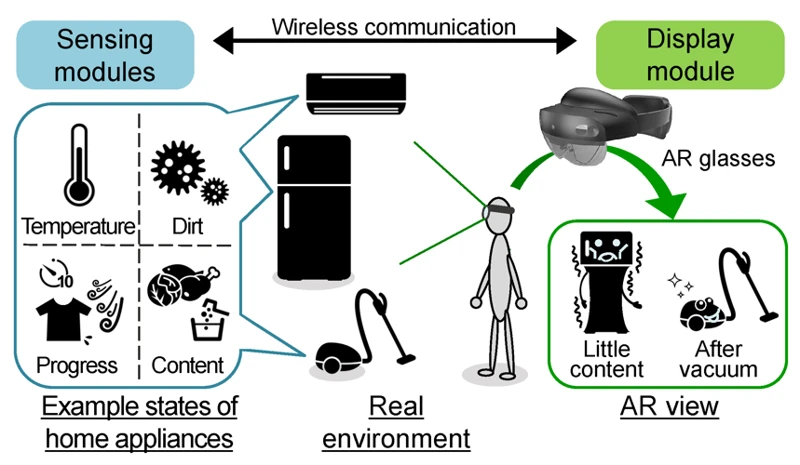
As we’ve established, smart sensors have a significant role in reducing noise levels in vacuum cleaners. However, the benefits of implementing this technology go beyond just decreasing noise pollution. By utilizing smart sensors in vacuum cleaners, you can enjoy a more stress-free cleaning experience, improve the efficiency and durability of your vacuum, and promote quieter environments in both residential and commercial settings. In this section, we will explore these benefits in detail, as well as examine the potential challenges that come with integrating smart sensors in vacuum cleaners.
10. Minimizing Noise Pollution in Residential and Commercial Settings
Noise pollution is a growing concern in both residential and commercial settings, with the World Health Organization citing it as a leading environmental health issue. Vacuum cleaners are a common source of noise pollution, particularly in workplaces and shared living spaces. However, by incorporating smart sensor technology, these machines can drastically reduce their noise footprint.
Smart sensors allow vacuum cleaners to adapt their performance based on their surroundings, reducing the need for high energy consumption and maximizing effectiveness. By detecting the presence of obstacles, infrared and laser sensors can adjust suction power to match the surface being cleaned, while ultrasonic sensors can sense even the smallest particles of dust and dirt. Additionally, camera sensors can pinpoint areas that require extra attention, ensuring thorough cleaning without excessive noise.
By utilizing variable suction modes, brushless motors, and automatically adjusting RPMs, vacuum cleaners with smart sensor technology can effectively clean any surface without the loud noise that traditional vacuum cleaners produce. This is especially important in shared spaces, where excessive noise can lead to stress, distraction, and even hearing loss.
In addition to minimizing noise pollution, smart sensor technology has a range of other benefits for users. It facilitates stress-free cleaning experiences by eliminating the need for manual adjustments, while also enhancing the efficiency and durability of vacuum cleaners. However, there are still some challenges to implementing smart sensor technology, such as the cost and complexity of integration, maintenance requirements, and compatibility issues with certain features and components.
Despite these challenges, the potential benefits of smart sensors in vacuum cleaners are significant. As artificial intelligence and machine learning continue to improve, we can expect to see even more advanced features that prioritize both performance and noise reduction. The future of cleaning may be quieter than ever before.
| Benefits of Smart Sensors for Noise Reduction in Vacuum Cleaners: | Examples: |
| Reduces noise pollution | Adjusting suction power based on obstacles, using variable suction modes, lowering RPM of brushless motors |
| Facilitates stress-free cleaning experiences | Automatically adjusting power and speed based on surface being cleaned, eliminating manual adjustments |
| Enhances efficiency and durability of vacuum cleaners | Maximizing suction power while minimizing energy consumption, reducing wear and tear on motor |
11. Facilitating Stress-free Cleaning Experience
Smart sensors in vacuum cleaners have not only contributed to noise reduction but also to facilitating a stress-free cleaning experience for users. With the advanced technology in sensors, they are capable of identifying any obstacles in their cleaning path and adjusting the suction power accordingly. This removes the need for users to manually adjust the suction power or move obstacles out of the way, ultimately reducing the effort and stress required for cleaning.
Another benefit that smart sensors provide in vacuum cleaners is the ability to continuously monitor and adjust the speed and performance of the vacuum. This means that users do not need to constantly check on the vacuum to ensure it is working efficiently. Smart sensors allow for the provision of variable suction modes, enabling users to adjust the suction power based on the surface being cleaned.
All of these features combined make for a more streamlined and automated vacuuming experience that minimizes stress and effort for the user. This is especially true in larger households or commercial settings where lengthy cleaning sessions can become tedious and stressful.
To illustrate this point, below is a table highlighting the stress-reducing benefits of smart sensors in vacuum cleaners:
| Benefit | Explanation |
|---|---|
| Obstacle Detection | The vacuum can identify obstacles and automatically adjust suction power so that the user does not need to move them manually, reducing stress and effort. |
| Performance Monitoring | The vacuum continuously monitors and adjusts its performance, so users don’t need to check on it regularly, providing a stress-free cleaning experience. |
| Variable Suction Modes | Allows users to adjust the suction power based on the surface being cleaned, providing a customized cleaning experience and minimizing unnecessary strain on the user. |
Smart sensors not only contribute to noise reduction but also provide a convenient cleaning experience that reduces stress and effort for users.
12. Enhancing Efficiency and Durability of Vacuum Cleaners
Smart sensors have an essential role to play in enhancing both the efficiency and durability of vacuum cleaners. Here are some of the ways in which this is achieved:
1. Conserving Energy: One of the most significant advantages of smart sensors is that they help to conserve energy. For example, smart sensors can detect when a vacuum cleaner is operating at full efficiency and adjust the suction power accordingly. This prevents the motor from overworking, saving energy and increasing the lifespan of the vacuum cleaner.
2. Preventing Wear and Tear: Smart sensors can also help prevent the wear and tear of key components in vacuum cleaners. By monitoring the performance of key components such as the brushless motors and adjusting the suction power accordingly, smart sensors can help to prevent the motor from becoming damaged or worn over time.
3. Identifying Faults: Smart sensors can identify faults in vacuum cleaners, making it easier for owners to diagnose and resolve problems. For example, if a smart sensor detects that a motor is not working correctly, it can alert the owner to the issue, allowing them to take action before the problem becomes more serious.
4. Improving Cleaning Performance: Smart sensors can also help vacuum cleaners to clean more efficiently, by adjusting the suction power and speed of the motor to match the surface being cleaned. This means that vacuum cleaners with smart sensors can clean more effectively in less time, making them more efficient and reducing the wear and tear on key components.
The use of smart sensors in vacuum cleaners can help to enhance their efficiency and durability, making them a sound investment for any homeowner or business owner looking for a powerful yet reliable cleaning solution.
Challenges of Implementing Smart Sensors for Noise Reduction in Vacuum Cleaners
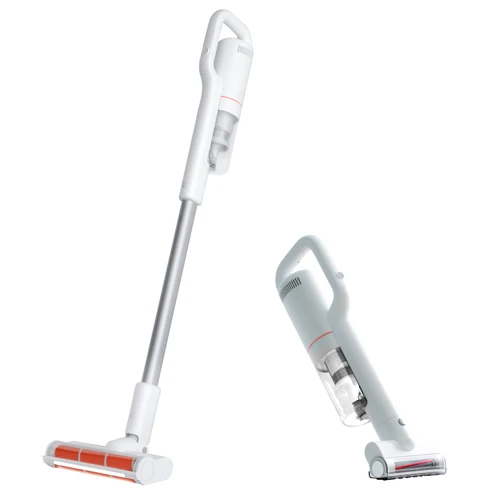
As much as smart sensors boast numerous advantages for noise reduction in vacuum cleaners, their implementation has not been without hurdles. The integration of smart sensors into vacuum cleaners comes with a plethora of challenges that manufacturers and engineers must address. These challenges range from the cost and complexity of integration, maintenance and calibration requirements, to limited compatibility with certain features and components. In this section, we will delve deeper into these challenges, exploring the opportunities and limitations of smart sensors in vacuum cleaners.
13. Cost and Complexity of Integration
One of the challenges in implementing smart sensors for noise reduction in vacuum cleaners is the cost and complexity of integration. While smart sensors can offer numerous benefits, the cost of integrating them into vacuum cleaners can be high. This is because the process of integrating smart sensors into vacuum cleaners requires specialized hardware and software components.
Additionally, the integration process can also be complex. The integration process can involve modifying the design of the vacuum cleaner to accommodate the smart sensors. This can require additional research and development and can add complexity to the manufacturing process.
Another factor that can add to the cost and complexity of integration is the compatibility of certain features and components. Some vacuum cleaners may not be compatible with certain types of smart sensors, which can lead to additional complications in the integration process.
Despite these challenges, the benefits of smart sensors for noise reduction in vacuum cleaners are numerous. As technology continues to advance, it is likely that the cost and complexity of integrating smart sensors into vacuum cleaners will decrease, making this technology more accessible to consumers.
14. Maintenance and Calibration Requirements
One of the challenges of implementing smart sensors for noise reduction in vacuum cleaners is the maintenance and calibration requirements. To ensure the sensors are functioning properly and accurately detecting dust, dirt, and obstacles, regular maintenance and calibration is necessary. This may involve cleaning the sensors, replacing worn parts, and adjusting settings.
To make sure the vacuum cleaner is providing the best cleaning results, regular calibration is crucial. Calibration ensures that the sensors are providing accurate data, which in turn ensures that the vacuum cleaner is adjusting its suction power and speed properly. The calibration process may involve adjusting the sensitivity of the sensors, resetting the sensors, and recalibrating accuracy.
Maintenance and calibration requirements vary depending on the type of smart sensor used in the vacuum cleaner. For example, infrared and laser sensors may require different cleaning and calibration methods compared to ultrasonic sensors or camera sensors. These maintenance and calibration requirements can also vary across different vacuum cleaner models and brands.
To avoid any malfunctions or issues with the smart sensors, it’s important to follow the maintenance and calibration recommendations provided by the manufacturer. Regularly maintaining and calibrating the vacuum cleaner can also help prolong its lifespan and ensure it continues to work efficiently and effectively, resulting in a quieter cleaning experience.
15. Limited Compatibility with Certain Features and Components
One of the challenges of implementing smart sensors for noise reduction in vacuum cleaners is the limited compatibility with certain features and components. While smart sensors can enhance the overall performance and efficiency of vacuum cleaners, they may not be compatible with certain components or features that are essential for optimal cleaning.
For example, some vacuum cleaners use a bagless design that relies on centrifugal force to separate dust and dirt from the airflow. However, the use of smart sensors may interfere with this process and reduce the effectiveness of the bagless design.
Similarly, some vacuum cleaners use a HEPA filter that traps small particles and allergens from the air. While smart sensors can help adjust suction power to optimize cleaning and reduce noise, they may not be compatible with the HEPA filter and reduce its effectiveness.
To overcome these compatibility issues, manufacturers must carefully design the smart sensors and ensure they work seamlessly with other components and features of the vacuum cleaner. This requires extensive testing and calibration to ensure the sensor does not interfere with other essential functions of the vacuum cleaner.
While the limited compatibility of smart sensors can pose a challenge for vacuum cleaner manufacturers, it is important to find innovative solutions that ensure smart sensors can work effectively with other components and features. This will facilitate the development of more efficient and reliable vacuum cleaners in the future.
Here’s a table that summarizes the limited compatibility with certain features and components challenge:
| Challenge | Explanation |
|---|---|
| Bagless Design | Smart sensors may interfere with centrifugal separation process. |
| HEPA Filter | Smart sensors may reduce the effectiveness of the filter. |
Future Developments in Smart Sensors for Vacuum Cleaners
Advancements in smart sensor technology have revolutionized the household cleaning industry, and the future looks even brighter. With ongoing research and development, engineers are constantly exploring new ways to improve the capabilities of vacuum cleaners. In the coming years, we can expect to see an array of cutting-edge sensors that will enhance vacuum performance and take cleaning to the next level. Let’s take a closer look at some of the exciting future developments in smart sensors for vacuum cleaners.
16. Artificial Intelligence for Autonomous Navigation and Cleaning
As technology advances, the integration of artificial intelligence (AI) in vacuum cleaners is becoming more common. AI enables vacuum cleaners to operate autonomously, allowing them to navigate around obstacles, detect and clean specific areas, and adjust to different floor types.
One of the most significant benefits of AI in vacuum cleaners is its ability to navigate and clean a room without human intervention. This is made possible through the use of sophisticated algorithms and sensors that enable the vacuum cleaner to create a map of the room and determine the best cleaning path. Some vacuum cleaners are even equipped with camera sensors that can recognize objects and obstacles in the room and adjust their cleaning behavior accordingly.
But AI-powered vacuum cleaners do not just clean autonomously. They also learn from their environment and improve their cleaning performance over time. For example, the vacuum cleaner can detect areas of the room that are particularly dirty and spend more time cleaning those areas. Additionally, the vacuum cleaner can learn to differentiate between different types of debris, such as dirt and pet hair, and adjust its suction power accordingly.
The use of AI in vacuum cleaners also offers potential benefits for households with pets, elderly or disabled individuals. These groups of people may have difficulty operating traditional vacuum cleaners, but an AI-powered vacuum cleaner can clean the floors automatically, providing a convenient solution.
However, there are still some challenges associated with implementing AI in vacuum cleaners. Firstly, it can be expensive to integrate AI into vacuum cleaners, which can increase the price of the appliance. Additionally, some consumers may be hesitant to trust an autonomous device with their cleaning tasks, preferring to have more control over the cleaning process.
Despite these challenges, the potential benefits of AI in vacuum cleaners are significant, and we can expect to see continued development in this area. As AI technology evolves, it is likely that vacuum cleaners will become smarter and more efficient, providing a stress-free and convenient cleaning experience for homeowners.
17. Advanced Data Analytics and Machine Learning for Performance Optimization
The integration of advanced data analytics and machine learning in smart vacuum cleaners is a game-changer for performance optimization. By analyzing data from smart sensors and user behavior, these vacuum cleaners can continuously adapt and improve their cleaning efficiency, while also reducing noise levels. Here are some ways in which these advanced technologies contribute to performance optimization:
- Identifying optimal cleaning routes: Vacuum cleaners equipped with advanced data analytics can analyze the layout of the cleaning area and optimize a cleaning route that reduces energy consumption and noise levels. Machine learning algorithms can also learn from patterns and adjust the route in real-time for maximum efficiency.
- Recognizing the type and amount of dirt: Machine learning algorithms can analyze the data from smart sensors and recognize the type and amount of dirt present in the cleaning area. This information can be used to adjust the suction power and cleaning modes to optimize cleaning efficiency while reducing noise levels.
- Personalizing cleaning preferences: Smart vacuum cleaners can utilize machine learning to personalize cleaning preferences based on user behavior. For example, if a user prefers a certain suction power or cleaning mode, the vacuum cleaner can learn from this and make adjustments to optimize cleaning efficiency and noise reduction.
- Real-time performance monitoring: Smart sensors constantly provide data on the performance of the vacuum cleaner. By using advanced data analytics and machine learning algorithms, this data can be analyzed in real-time to identify any issues and make necessary adjustments to optimize performance and reduce noise levels.
The integration of advanced data analytics and machine learning is a significant step towards improving the performance and noise reduction capabilities of smart vacuum cleaners. As technology continues to advance, we can expect to see even more sophisticated algorithms that can learn and adapt to user behavior and environmental factors, resulting in an even more efficient and silent vacuuming experience.
18. Integration with Smart Home and IoT Ecosystems
Vacuum cleaners equipped with smart sensors are becoming increasingly popular, and they are also adapting to the changing needs of modern homes. With the emergence of smart homes and the Internet of Things (IoT), these vacuum cleaners can now be integrated into larger ecosystems. This integration offers a range of exciting possibilities for users, making cleaning even easier and more personalized.
Here are some ways that smart sensors in vacuum cleaners can be integrated with smart home and IoT ecosystems:
- Voice control: Smart sensors can be linked to voice-activated assistants like Amazon Echo or Google Home devices, allowing users to control vacuum cleaner functions hands-free.
- Smartphone app control: Vacuum cleaners with smart sensors can also be connected to smartphone apps that allow users to control various settings, schedules, and cleaning modes remotely.
- Smart home automation: By integrating with smart home ecosystems, vacuum cleaners can automatically begin cleaning when the user leaves the house, or stop cleaning when the user opens the front door. This automation can save time and make cleaning less of a hassle.
- Integration with other IoT devices: Smart sensors can also allow vacuum cleaners to communicate with other IoT devices in the home, such as smart thermostats or security systems. These devices can work together to improve the overall efficiency of the home.
The benefits of integrating smart sensors in vacuum cleaners with smart home and IoT ecosystems are clear. Not only can users enjoy greater convenience and personalization, but they can also benefit from improved efficiency and energy savings. However, there are also some potential challenges, such as ensuring compatibility between different devices and ecosystems, and addressing security concerns related to the sharing of data.
Despite these challenges, the trend towards smart homes and IoT ecosystems is expected to continue, and vacuum cleaners with smart sensors and integration capabilities will likely become even more widespread. The possibilities for innovation and new features are numerous, and the future looks bright for these high-tech cleaning devices.
Conclusion
As we come to the end of this comprehensive guide on the role of smart sensors in reducing noise in vacuum cleaners, it is clear that these advanced technologies have a vital impact on the cleaning experience. From detecting dust particles to lowering the RPM of brushless motors, smart sensors play a crucial role in contributing to a quieter and seamless cleaning process. The benefits of these technologies are numerous, including minimizing noise pollution in residential and commercial spaces, enhancing efficiency and durability, and facilitating stress-free cleaning. However, there are also challenges to consider, such as the cost and complexity of integration and maintenance requirements. Yet, the future looks promising, with the potential for artificial intelligence and advanced data analytics to further optimize performance and integration with smart home and IoT ecosystems.
19. Recap of the Importance and Benefits of Smart Sensors for Noise Reduction in Vacuum Cleaners
As we have seen in this article, smart sensors play a crucial role in reducing noise levels in vacuum cleaners, making them more efficient and user-friendly. Let’s recap some of the most important benefits of smart sensors for noise reduction in vacuum cleaners:
| Benefit | Description |
| Noise reduction | Smart sensors can detect and adjust suction power, RPM, and suction modes to reduce the noise generated by vacuum cleaners, making them less disruptive in residential and commercial settings. |
| Efficiency | By minimizing unnecessary suction and adjusting settings to specific surface types, smart sensors increase the efficiency and performance of vacuum cleaners, resulting in a cleaner space with less effort. |
| Durability | Smart sensors can help protect vacuum cleaners from damage caused by obstacles, reducing the risk of breakdowns and extending the lifespan of the device. |
| Convenience | Smart sensors allow for more seamless and stress-free cleaning experiences, as they eliminate the need for manual adjustments and provide customized settings based on the environment. |
In addition to these benefits, smart sensors also offer many challenges and areas for development. From the cost and complexity of integration to the maintenance requirements and limited compatibility with certain components, there is still room for improvement in the implementation of smart sensors in vacuum cleaners.
However, despite these challenges, the future of smart vacuum cleaners looks promising. Advanced technologies like AI and data analytics are driving innovation and growth in the market, making vacuum cleaners more capable and versatile than ever before. As we move forward, we can expect smart sensors to continue playing a key role in making vacuum cleaners quieter, more efficient, and more user-friendly.
20. Outlook on the Growth and Potential of Smart Vacuum Cleaners in the Market
Looking forward, it is clear that smart vacuum cleaners have immense growth potential in the market. Below are some factors that contribute to a positive outlook on the future of these devices:
- Increasing Demand for Smart Home Technology: As more and more consumers adopt smart home technology, the demand for smart vacuum cleaners is likely to grow as well. With the ability to connect to other devices and be controlled remotely, smart vacuums offer convenience and ease of use that traditional vacuums lack.
- Advancements in Sensor Technology: As sensor technology continues to improve, smart vacuum cleaners will offer even more advanced features such as better obstacle detection, precise mapping, and efficient navigation.
- Growing Awareness of Noise Pollution: As people become more aware of the harmful effects of noise pollution, there is likely to be a greater demand for quieter home appliances. Smart vacuum cleaners, with their noise reduction features, are well positioned to meet this demand.
- Growing Concern for Air Quality: With rising concerns about air quality, there is a growing interest in air filtration and purification technologies. Smart vacuum cleaners can provide this in addition to noise reduction and other advanced features.
- Increasing Competition in the Market: As more companies enter the market, competition is likely to increase, leading to more innovation and better products for consumers.
- Integration with IoT Ecosystems: Smart vacuum cleaners can be integrated with other smart home devices and systems, creating a fully connected and automated home environment. This integration will further enhance the value and appeal of smart vacuums in the market.
The future of smart vacuum cleaners looks promising, with increasing consumer demand, advancing technology, and growing awareness of the benefits of these devices. As the market continues to evolve and mature, smart vacuum cleaners will likely become even more popular and widely adopted.
Frequently Asked Questions
1. How do smart sensors adjust suction power in vacuum cleaners?
Smart sensors can detect the amount and type of dust and dirt on a surface, and adjust the suction power accordingly to optimize cleaning efficiency and noise reduction.
2. What type of sensors are used to identify obstacles in vacuum cleaners?
Infrared and laser sensors are commonly used to detect obstacles in the path of a vacuum cleaner and help it navigate around them to avoid collisions.
3. Do smart sensors impact the performance of vacuum cleaners?
Yes, smart sensors can significantly enhance the performance of vacuum cleaners by optimizing suction power, detecting obstacles, and minimizing noise pollution.
4. What is the advantage of using camera sensors in vacuum cleaners?
Camera sensors can provide detailed images of the cleaning area, allowing the vacuum cleaner to identify and avoid obstacles, and optimize cleaning paths and suction power.
5. Can smart sensors minimize noise pollution in commercial settings?
Yes, smart sensors can contribute to a quieter and more efficient cleaning experience in commercial settings, reducing noise pollution and improving productivity.
6. Is it difficult to integrate smart sensors into vacuum cleaners?
Integrating smart sensors into vacuum cleaners can be challenging, as it requires specialized expertise in engineering, programming, and electronics.
7. What is the cost of implementing smart sensors in vacuum cleaners?
The cost of implementing smart sensors in vacuum cleaners can vary depending on the complexity and functionality of the sensors, but it generally involves an additional investment in hardware and software design and development.
8. What is the maintenance requirement for smart sensors in vacuum cleaners?
Smart sensors in vacuum cleaners require regular calibration and maintenance to ensure proper functionality and accuracy. This may involve software updates, sensor calibration, and mechanical adjustments.
9. Can smart sensors be used in robotic vacuum cleaners?
Yes, smart sensors can be integrated into robotic vacuum cleaners to enhance their performance, efficiency, and autonomy.
10. What is the potential market for smart vacuum cleaners?
The market for smart vacuum cleaners is expected to grow rapidly in the coming years, as more consumers seek advanced cleaning solutions that are efficient, convenient, and environmentally friendly.
